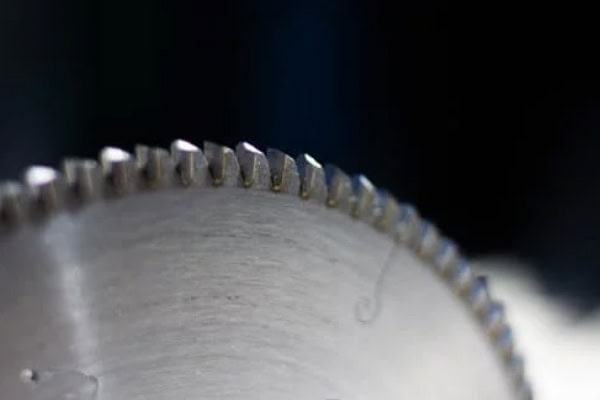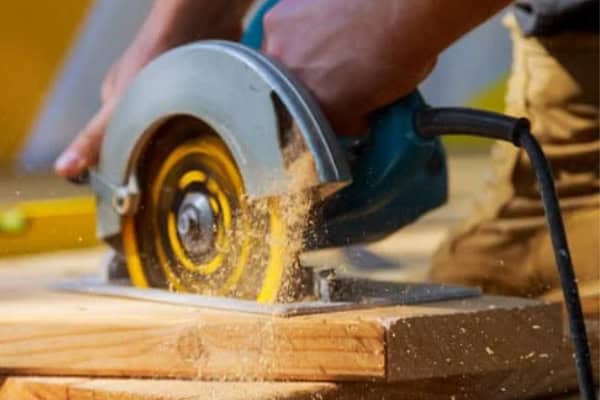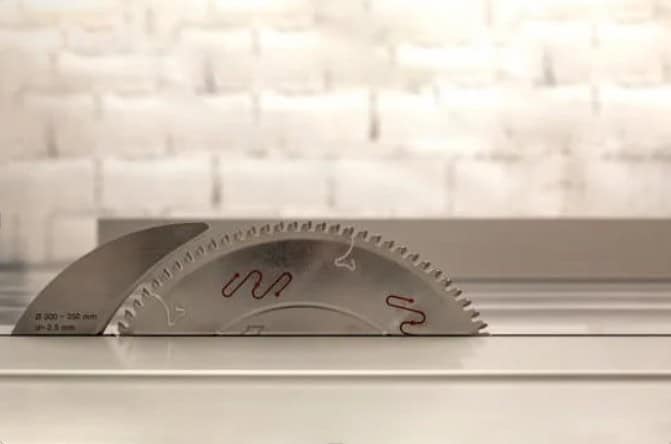
Choosing the perfect carbide saw blade can seem overwhelming, but it doesn’t have to be. Whether you’re cutting wood, metal, or aluminum, the right blade makes all the difference. Let’s explore what you need to know to make the best choice for your project.
Carbide saw blades feature tungsten carbide-tipped teeth for exceptional durability and sharpness, lasting up to 50 times longer than steel blades. Ideal for cutting hardwood, plywood, and metal, they ensure precise, clean cuts. Choose the right tooth count and arbor size to optimize performance and safety. Carbide blades retain their sharpness longer and provide precise, clean cuts, even on tough materials.
Let’s dive into the different types of carbide saw blades and their uses.
What is a carbide saw blade?
Carbide saw blades are made with steel bodies and carbide-tipped teeth1. The carbide tips are created from tungsten carbide, a material known for its extreme hardness and heat resistance. This combination allows the blade to maintain sharpness and deliver exceptional performance across a wide range of applications.
Why choose carbide over standard steel blades?
Carbide-tipped blades last up to 50 times longer than standard steel blades. They’re especially useful for tasks that require precision and durability, such as cutting dense wood or hard metals.
Tipos de lâminas de serra de metal duro
- For Wood: Blades with a high tooth count (e.g., 80 teeth) ensure clean, smooth cuts in hardwood or plywood. For rough cuts, fewer teeth (e.g., 24 teeth) are ideal.
- For Metal: These blades feature specialized teeth geometry and coatings to handle the hardness of steel and other metals.
- For Aluminum: Aluminum blades have a unique design to prevent clogging and ensure smooth cutting through soft, non-ferrous metals.

Benefits of Carbide Tips
| Característica | Standard Blades | Lâminas de carboneto |
|---|---|---|
| Durabilidade | Moderate | High |
| Sharpness Retention | Low | Excellent |
| Heat Resistance | Low | High |
Carbide saw blades are your go-to solution for long-lasting, high-quality cutting tools.
Best Blade for Circular Saw to Cut Wood?
When working with wood, choosing the right blade ensures smooth, efficient cuts. Whether you’re cutting softwood, hardwood2, or plywood, each material demands a specific blade design.
What’s the ideal blade for wood cutting?
A 24-tooth blade is perfect for rough cuts in construction lumber, while an 80-tooth blade provides the smooth finish needed for cabinetry and fine woodworking.
Blade Design for Wood Cutting
- Hook Angle: A positive hook angle (10-15 degrees) helps pull the blade into the material, making it ideal for ripping lumber.
- Kerf Width: Thinner kerf blades reduce material waste and require less power, making them suitable for smaller saws.
- Tooth Shape: Alternate Top Bevel (ATB) teeth create clean, cross-grain cuts.
Choosing the Right Blade
| Material | Tooth Count | Hook Angle |
|---|---|---|
| Madeira macia | 24 | 15° |
| Madeira dura | 60 | 10° |
| Madeira compensada | 80 | 5° |
Proper blade selection ensures clean cuts with minimal tear-out.
Best Blade for Cutting Metal?
Metal-cutting requires specialized carbide blades designed to handle hard materials without dulling or breaking. These blades are engineered for strength and heat resistance.
What blade is best for cutting metal?
Look for blades with fewer teeth and specially coated carbide tips. These features reduce friction and prevent overheating during cuts.
Key Features of Metal-Cutting Blades
- Tooth Count: Fewer teeth (e.g., 36 teeth) allow for better chip clearance when cutting thick materials.
- Tooth Geometry: Triple Chip Grind (TCG) teeth prevent chipping and ensure clean cuts.
- Coatings: Blades with heat-resistant coatings last longer and reduce blade warping.
| Tipo de metal | Tipo de lâmina | Revestimento |
|---|---|---|
| Mild Steel | TCG Carbide | Heat Resistant |
| Aço inoxidável | TCG Carbide | Titânio |
| Alumínio | High Tooth Count | Non-stick |
Always use a lubricant or cutting oil to reduce heat and wear when cutting metal.
What does Arbor Mean on a Saw Blade?
The arbor is the hole in the center of the saw blade that fits onto the circular saw’s spindle3. It’s essential for the blade’s stability and alignment during operation.
Why is arbor size important?
The arbor size must match your saw to prevent wobbling, uneven cuts, or potential accidents.
Common Arbor Sizes
- 5/8 Inch: Standard size for most circular saws.
- 1 Inch: Used in industrial or specialized saws.
- Adapters: Reducing rings allow larger arbor blades to fit smaller shafts.
Tips for Proper Fit
- Always check your saw’s specifications for arbor size.
- Ensure the blade sits flush on the spindle before tightening.
- Avoid over-tightening, which can warp the blade.
How Long Does a Circular Saw Blade Last?
The lifespan of a circular saw blade depends on its material, frequency of use4, and maintenance. Carbide blades typically last much longer than their steel counterparts.
How do you know when to replace a blade?
Signs include dull cuts, burning, or requiring extra effort to cut through materials. Regular cleaning and storage also extend a blade’s life.
Maintenance Tips
- Clean Resin Buildup: Use a blade cleaner to remove sap and pitch.
- Avoid Debris: Inspect materials for nails or screws before cutting.
- Proper Storage: Store blades in a dry, secure place to prevent rust or damage.

Maximizing Blade Life
| Task | Best Practice |
|---|---|
| Limpeza | Use a specialized cleaner |
| Inspection | Check for damage before use |
| Storage | Hang blades or use blade cases |
By following these steps, you can get the most out of your circular saw blades.
Conclusão
Choosing the right carbide saw blade isn’t just about cutting; it’s about efficiency, precision, and durability. Whether you’re working with wood, metal, or aluminum, understanding blade features ensures you achieve the best results. Take the time to select the right blade, maintain it properly, and enjoy smooth, effortless cuts every time.
-
Carbide-tipped teeth are key to blade performance. Offer more detailed information on their advantages, such as longevity and cutting precision. ↩
-
Hardwood requires specific blade features for optimal cutting. ↩
-
The spindle is a critical component for holding the blade securely. ↩
-
Insight into wear-and-tear caused by usage patterns and offers tips for prolonging blade life. ↩